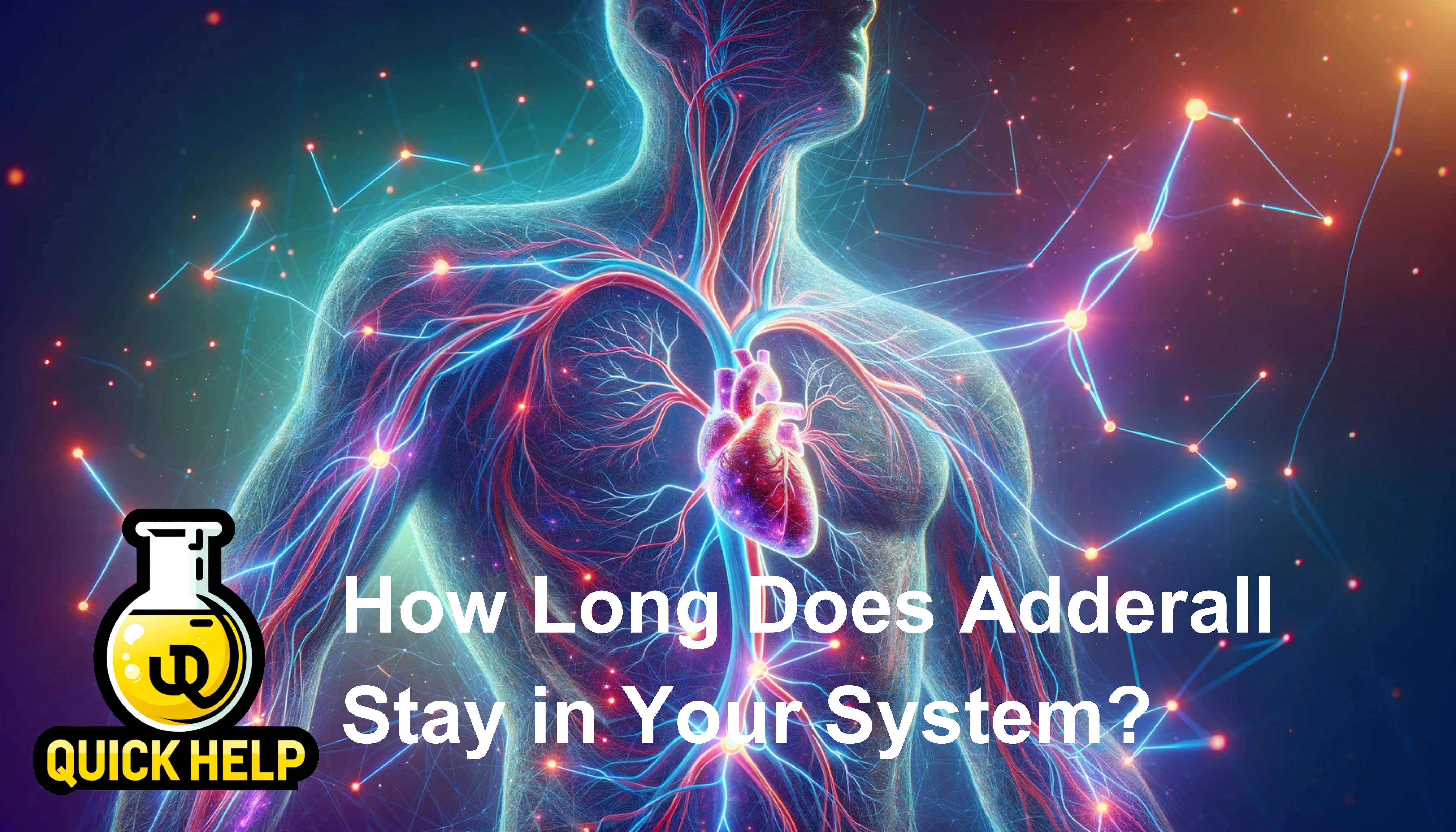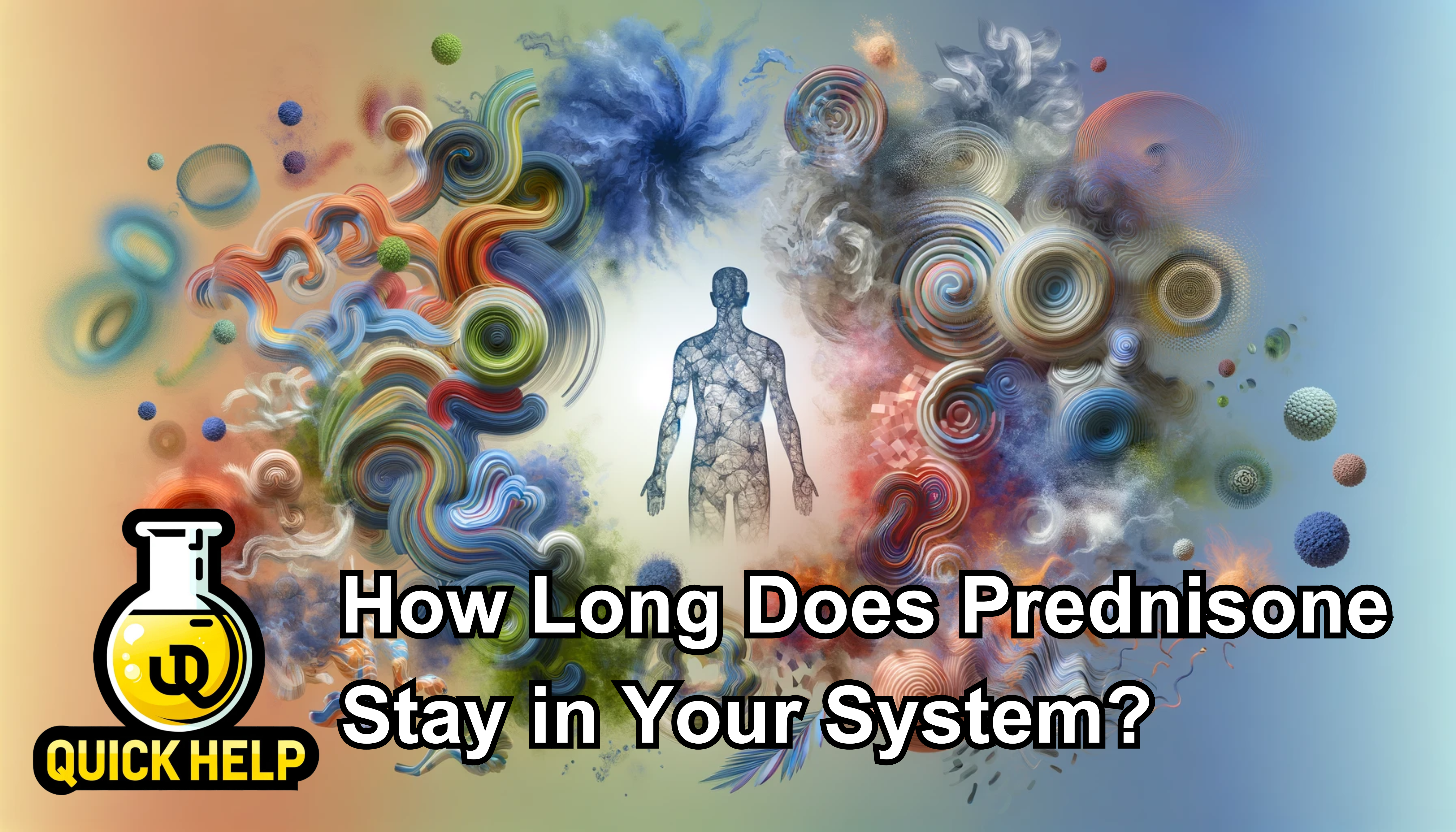Understanding Prednisone: A Medical Overview
Understanding Prednisone: A Medical Overview begins by examining the common uses of prednisone and outlining its potential side effects. Prednisone is a corticosteroid drug that is commonly prescribed for various medical conditions. While it can be effective in treating inflammation, allergies, and autoimmune disorders, it can also have significant side effects. Some of the most common side effects include weight gain, osteoporosis, diabetes, bruising, muscle weakness, cataracts, stretch marks, and a bloated face. Understanding how long prednisone stays in the system is crucial for managing its potential risks. The drug has a half-life of about 2 to 3 hours, with plasma levels eliminating within a day. However, certain factors such as health, age, and metabolism can influence the duration of prednisone in your system. In urine, prednisone can be detected for up to several days. To learn more about prednisone and its side effects, you can visit drugs.com or consult your healthcare provider for any specific questions or concerns you may have.
Prednisone and its Common Uses
Prednisone is a widely used corticosteroid medication that is prescribed for a variety of conditions. It is known for its anti-inflammatory effects and its ability to suppress the immune system. Common uses of prednisone include treating conditions such as arthritis pain, allergic reactions, and certain skin disorders. Many consumers rely on the package insert and drug information provided by health professionals and support groups to learn about the potential effects and risks of prednisone. It is important to note that the length of time prednisone stays in your system can vary depending on factors such as body mass, dose, and individual metabolism. In urine, prednisone can typically be detected for 16.5 to 22 hours.
Prednisone is known for its powerful effects on the body’s hormone cortisol, which plays a crucial role in regulating metabolism and the immune system. When used as prescribed, prednisone can provide relief from a variety of symptoms associated with certain conditions. However, it is important to be aware of the potential side effects and risks associated with long-term use of this medication. Prednisone can cause weight gain and mood changes, and in some cases, a gradual prednisone taper schedule may be necessary to minimize withdrawal symptoms. It is also important to avoid alcohol while taking prednisone, as alcohol can interact with the drug and increase the risk of side effects. Overall, understanding how long prednisone stays in your system, the effects it can have on your body, and taking necessary precautions will help ensure safe and effective use of this medication.
Outlining Prednisone’s Potential Side Effects
Prednisone is a commonly prescribed medication for various medical conditions such as rheumatoid arthritis, asthma, allergies, and lupus. While it can be highly effective in reducing inflammation and swelling in affected areas, it is important to be aware of its potential side effects. According to Mayo Clinic, prednisone can cause a wide range of side effects due to its impact on the body’s normal processes. When metabolized by the liver, prednisone produces active metabolites that enter the bloodstream and circulate throughout the body. These metabolites are then broken down by enzymes, specifically cytochrome P450 enzymes, which can vary in individuals. The dose and duration of prednisone use also play a significant role in determining the intensity and length of potential side effects. As a result, prednisone can stay in your system for up to several days, with a half-life ranging from 16.5 to 22 hours. It is crucial to consult your healthcare provider and monitor your health status to minimize the risk of adverse effects.
The side effects of prednisone can affect various aspects of your health. Common side effects include weight gain, increased appetite, and fluid retention. These effects occur as prednisone affects the normal production and release of hormones, particularly cortisol, in the body. Other potential side effects include changes in mood and behavior, insomnia, high blood pressure, and weakened immune response. Additionally, prednisone can cause gastrointestinal issues such as stomach ulcers and increased susceptibility to infections. It is important to note that the duration of prednisone use and individual factors can influence the severity and occurrence of these side effects. Therefore, it is crucial to carefully consider the amount and duration of prednisone dose based on your specific needs and health condition.
The Life Cycle of Prednisone in the Human Body
Prednisone, a commonly used medication, goes through a specific life cycle within the human body. After being metabolized and absorbed, it undergoes detoxification primarily in the liver and is eventually eliminated through bile and urine. The rate at which prednisone is eliminated varies, with a half-life of 16.5 to 22 hours in most individuals. However, factors such as dosage, genetics, and health conditions can influence the length of time prednisone stays in your system. Understanding the life cycle of prednisone is crucial in managing potential complications and monitoring for any adverse outcomes. According to drugs.com, prednisone can have numerous side effects including increased blood pressure, high blood sugar levels, muscle weakness, mood changes, insomnia, and vision problems. It is important to consult a doctor for proper management and monitoring while using prednisone to minimize these potential complications and ensure the best outcomes.
Prednisone’s Metabolism and Absorption
Prednisone, a commonly prescribed corticosteroid, undergoes various processes of metabolism and absorption within the human body. The administration routes of prednisone, including oral intake, intravenous, ocular, and intranasal, can affect its metabolism and absorption profile. Studies using mass spectrometry have provided insights into prednisone’s excretion profile and the formation of its metabolites, such as 20α-dihydro-prednisolone. The duration of prednisone’s presence in the system can vary depending on factors such as dosage and individual metabolism. For instance, for urine samples, prednisone can be detected within a 16.5 to 22 hour period, while its metabolite can be detected for up to several days. Understanding the metabolism and absorption of prednisone is crucial for optimizing its therapeutic use and minimizing potential side effects.
Knowing how long prednisone stays in your system is important when considering its side effects and the impact it may have on your body. One common side effect of prednisone is weight gain, which can be attributed to increased appetite and water retention. Additionally, prolonged use of prednisone may increase the risk of developing glaucoma and other eye diseases, as it can cause damage to the optic nerve. It is also worth noting that prednisone use has been linked to decreased bone density and an increased risk of osteoporosis. Therefore, it is essential to work closely with healthcare providers to monitor and mitigate any potential risks associated with prednisone use.
The Process of Prednisone Detoxification
Detoxification of prednisone from the human body is a complex process that varies depending on several factors. A study published in the Journal of Drug Testing and Analysis (doi: 10.1002/dta.2733) investigated the excretion profile of prednisone and its metabolite, 20β-dihydro-prednisolone, in urine samples. The researchers used liquid chromatography-mass spectrometric (LC-MS) analysis to detect and measure the concentration of these compounds. After hydrolysis and extraction with tert-butylmethylether, the samples went through separation on a column with water, acetonitrile, and formic acid as the mobile phases. The LC-MS system with quadrupole ion trap and electrospray ionization in positive ion acquisition mode allowed for the monitoring of specific reaction profiles. The study found that prednisone and its metabolite can be detected in urine within a day, with a mean elimination half-life of 16.5 to 22 hours.
The duration of prednisone’s presence in the body depends on various factors such as formulations, doses, and individual body characteristics. Generally, prednisone’s elimination half-life ranges from 15 to 20 hours, leading to its excretion within 24 hours. However, in some cases, prednisone can remain in the system for up to several days. It is important to note that the timing of a drug test can also impact its detection in urine. Additionally, specific factors like the rate of metabolism and the efficiency of renal excretion can influence how long prednisone stays in the body. Therefore, individuals should consult their healthcare providers for personalized information on prednisone’s elimination timeline.
How Timing Factors into Prednisone’s Presence
How long does prednisone stay in your system? Prednisone, a commonly prescribed corticosteroid, has a relatively short presence in the human body. Studies have shown that in human urine, prednisone and its metabolites, such as prednisolone, can be detected within a day, with concentrations peaking within 16.5 to 22 hours. This information is of significant importance in areas such as pharmacology, where the characterization and evaluation of prednisone pharmaceutical formulations become crucial. The washout period and reporting levels for prednisone and its metabolites in urine are all keywords that researchers and healthcare professionals must consider when studying the pharmacology and mechanisms of glucocorticoid action. For more information on prednisone’s presence in the body, refer to articles published by De et al. and RJ et al. in John Wiley & Sons. Additionally, the duration of prednisone’s presence in the body varies depending on individual factors, with some research suggesting a washout period of up to several days. However, it’s important to note that the effects of prednisone on one’s health extend beyond its mere presence in the body.
Prednisone in the System: A 16.5 to 22 Hour Journey
Prednisone, a corticosteroid used to reduce inflammation and suppress the immune system, has a relatively short half-life in the body. The time it takes for prednisone to stay in your system, specifically in the urine, ranges from 16.5 to 22 hours. This means that within a day, the majority of prednisone is metabolized and eliminated from the body. However, it’s important to note that the duration may vary depending on individual body factors, such as metabolism and the presence of certain health conditions.
During its journey through the body, prednisone is converted into prednisolone, which is the active form responsible for its therapeutic effects. The fast metabolism of prednisone into prednisolone contributes to its relatively short time in the system. The levels of prednisone and its metabolites decrease over time until they are no longer detectable. This information is relevant for athletes who may misuse prednisone or related substances for improved performance, as it highlights the importance of adhering to drug-testing regulations. Additionally, for medical professionals and researchers, understanding the pharmacokinetics of prednisone is crucial when considering its use in the treatment of diseases such as rheumatoid arthritis or allergic rhinitis. Reliable text sources and molecular biology databases provide resources for further investigation into the relevance and specifics of prednisone’s presence in the body.
The Impact of Prednisone Within 24 Hours
Prednisone, a commonly prescribed corticosteroid, has a significant impact on the human body within 24 hours of administration. The duration for which prednisone stays in your system varies, particularly depending on how long does prednisone stay in your system? (urine). Prednisone is often prescribed for various conditions such as arthritis, gouty arthritis, and chronic obstructive pulmonary disease. It helps alleviate pain and reduce symptoms associated with these illnesses. In addition, prednisone is effective in treating sensitivity reactions, dermatitis, Crohn’s disease, and inflammatory bowel disease. Its immunosuppressive properties make it valuable in managing lupus and other autoimmune diseases. By suppressing inflammation and the immune system, prednisone provides relief for a wide range of ailments, including skin conditions, dizziness, drowsiness, and halting exacerbations of chronic illnesses. However, it is important for doctors to monitor potassium levels, particularly in patients with leukemia, multiple sclerosis, or lung problems, as prednisone can affect them. Prednisone, a widely used glucocorticoid, is beneficial for relieving aches and providing relief to women suffering from hormone-related issues. The impact of prednisone within 24 hours can vary depending on numerous factors, such as the individual’s metabolism and the dosage administered. While the effects may last within a day, the exact duration can range from 15 to 20 hours, with the drug typically remaining in the system for approximately 16.5 to 22 hours. In some cases, prednisone may linger in the body for up to several days. However, the initial effects typically begin within two to four hours of ingestion, with peak effectiveness being experienced at around 2 to 3 hours. It is essential for individuals to be aware of how long does prednisone stay in your system? (urine) in order to understand its impact on their health and adjust their dosage or treatment plan accordingly.
Variables Affecting Prednisone’s Time in Your System
Prednisone, a commonly prescribed steroid medication, can stay in your system for various lengths of time depending on several factors. The dosage levels and frequency of the medication play a significant role in determining how long prednisone remains in your system. For those taking a higher prednisone dosage or using it for a more extended period, the drug may take longer to clear from the body. Additionally, individual body factors, such as metabolism and overall health condition, can affect how quickly prednisone is metabolized and eliminated. It’s important to note that prednisone can have different side effects and durations of action depending on the form it is taken and the specific health condition it is addressing. For example, when used to treat conditions like COPD, autoimmune disorders, conjunctivitis, organ rejection, rash, osteoarthritis, erythema multiforme, and Stevens-Johnson syndrome, prednisone’s effects and clearance times can vary. It’s always recommended to consult with your healthcare provider or pharmacist for more precise information on how long the medication will stay in your system based on your specific circumstances.
Individual Body Factors Influencing Prednisone’s Retention
Individual body factors can significantly influence how long prednisone stays in your system, particularly in urine. These factors include the dosage and frequency of medication intake, your body’s ability to metabolize and absorb the drug, and any underlying health conditions you may have. For example, individuals with lupus erythematosus may experience slower clearance of prednisone due to their compromised immune system. It is crucial to consult with your healthcare provider to determine the appropriate duration of prednisone treatment and to monitor for any potential side effects or interactions with other medications you may be taking.
The Role of Health Conditions on Prednisone Persistence
Health conditions play a significant role in the persistence of prednisone in the system. Prednisone, a type of corticosteroid or glucocorticoid, can stay in your system for varying durations depending on several factors. For example, in individuals with certain health issues, such as kidney or liver problems, prednisone may take longer to be eliminated from the body. Additionally, breastfeeding mothers should be cautious as small amounts of prednisone can be excreted in breast milk, potentially affecting infants. It is crucial to be aware of these events and consult a healthcare provider to prevent potential harm and growth problems in the infants.
Certain health conditions can also impact the response to prednisone and increase the risk of toxicity. Individuals with high blood pressure may experience difficulties in managing their condition while using prednisone due to its association with weight gain and fluid retention. Moreover, prednisone can interact with other medications, including antidepressants and birth control pills, resulting in adverse effects or decreased effectiveness. It is essential to inform healthcare professionals about all medications being taken to reduce the chance of such interactions and minimize any potential harm. Monitoring of symptoms like nausea, muscle weakness, and rhythm disruptions in the ears or eyes is crucial to identify any signs of prednisone overdose or toxicity.
Prednisone Withdrawal: Symptoms and Management
Prednisone withdrawal symptoms can occur when individuals abruptly stop taking the medication after prolonged use. These symptoms may include fatigue, muscle weakness, joint pain, fever, and even depression. The severity and duration of withdrawal symptoms can vary depending on several factors, such as the length of time the medication was taken and the dosage. Prednisone can stay in your system for about 16.5 to 22 hours, with some reports suggesting it can take up to several days for complete elimination. It’s important for physicians to carefully manage the administration of prednisone and gradually taper the dosage to minimize the risk of withdrawal symptoms. Additionally, certain substances, such as quetiapine, diuretics, and bupropion, may interact with prednisone and increase the risk of side effects. Patients should always consult their healthcare providers and carefully read label warnings to ensure safe and effective usage.
Recognizing Prednisone Withdrawal Symptoms
Recognizing Prednisone Withdrawal Symptoms can be crucial in managing the potential effects of discontinuing the medication. Prednisone, a commonly prescribed corticosteroid, is known for its anti-inflammatory properties and is often used to treat various conditions such as asthma, allergies, and skin disorders. However, prolonged use or abrupt cessation of prednisone can lead to withdrawal symptoms. These symptoms can vary in severity and duration, depending on factors such as the duration of prednisone use, dosage, and individual body factors. Common withdrawal symptoms may include fatigue, muscle weakness, joint pain, nausea, and changes in mood. It is important to note that prednisone withdrawal should be monitored and managed under the guidance of a healthcare provider to minimize potential risks.
Recognizing the potential withdrawal symptoms associated with prednisone use is crucial in understanding how the medication can affect the body. Prednisone is primarily metabolized in the liver and has a relatively short half-life, with a duration of 16.5 to 22 hours in the system. However, the effects of prednisone can persist for longer periods due to its impact on various bodily functions. For instance, prednisone can affect blood sugar levels and may interact with certain medications such as warfarin, antibiotics (fluoroquinolones), and heart medications. Additionally, prednisone can increase the risk of tendon damage and heart rhythm issues. Withdrawal symptoms can manifest within a day of discontinuing prednisone and may persist for up to several days. Therefore, understanding the potential withdrawal symptoms and their implications can help individuals navigate their prednisone usage more effectively and seek appropriate medical guidance when needed.
Steps Towards Managing Prednisone Withdrawal
Managing prednisone withdrawal requires careful attention to various factors, including how long the drug stays in your system, metabolism, and the guidance of a healthcare provider. The duration of prednisone in the body depends on several factors, such as age, body size, and prednisone dosage. On average, it takes around 16.5 to 22 hours for prednisone to be eliminated from the system, with variations ranging from 15 to 20 hours. However, it’s important to note that prednisone can still be detected in urine within a day or up to several days after the last dose. With the support of a healthcare provider, a tailored course of action can be devised to gradually reduce prednisone levels and manage withdrawal symptoms.
It’s crucial to work closely with your healthcare provider when managing prednisone withdrawal, as certain health conditions and medications can affect the process. For example, individuals taking isoniazid or digoxin for heart failure may experience slower metabolism rates, leading to a longer prednisone half-life. Additionally, certain combinations of prednisone with other corticosteroids can influence the elimination timeline. Understanding these factors and their impact on the body is key in developing a plan that ensures a safe and smooth transition off prednisone. By closely monitoring plasma levels, adjusting prednisone frequency and dosage, and gradually tapering off the medication, one can minimize the risk of withdrawal symptoms and successfully manage the process.
Navigating Prednisone Usage: Guidance and Precautions
Navigating Prednisone Usage: Guidance and Precautions
When it comes to navigating prednisone usage, there are several important factors to consider. Firstly, understanding how long prednisone stays in your system, specifically in urine, can be helpful. On average, the elimination half-life of prednisone is around 16.5 to 22 hours. However, this can vary depending on factors such as body mass, lifestyle practices, and the dosage frequency. It’s crucial to work closely with a healthcare professional to determine the appropriate dosage and duration for your condition. Another precaution to keep in mind is the potential side effects of prednisone, including its impact on wound healing and the functioning of adrenal glands. Additionally, tapered dosing is often recommended to minimize the risk of withdrawal symptoms such as high blood pressure, skin changes, and mood swings. By closely monitoring your dosage and following the guidance of your healthcare provider, you can navigate prednisone usage in a way that maximizes its effectiveness while minimizing potential risks.
Consulting your Healthcare Provider: Measures and Warnings
Consulting your healthcare provider is essential when it comes to prednisone usage. They can provide measures and warnings to ensure your safety and well-being. It is important to discuss with your doctor or physician how long prednisone stays in your system, particularly in urine, as this can affect the timing of your dosage. They can also address potential stomach issues such as indigestion and stomach upset, as well as mood swings and irritability that may arise from prednisone use. Additionally, your healthcare provider can guide you on managing withdrawal symptoms, monitoring for interaction risks, and taking precautions to prevent bone thinning, stomach irritation, and other side effects.
Your healthcare provider will play a crucial role in developing a personalized treatment plan that caters to your specific symptoms and lifestyle. They can help navigate any health conditions, such as heart disease or diabetes, that may require special considerations during prednisone usage. Moreover, they will educate you on the importance of gradually tapering off prednisone to avoid withdrawal symptoms. Additionally, doctors can monitor for potential complications like glaucoma, cataracts, infections, and osteoporosis, which may arise from prolonged use of prednisone. By consulting your healthcare provider, you can address any concerns, discuss potential side effects, and ensure that your treatment aligns with your individual needs and overall health.
Monitoring for Interaction and Addiction Risks
Monitoring for interaction and addiction risks is crucial when using prednisone, as it can have various effects on the body. Prednisone stays in your system for about 16.5 to 22 hours, and it can be detected in urine for up to several days. Patients who take prednisone may experience side effects such as anxiety, depression, and weight gain. The severity and likelihood of these reactions vary among individuals, but it is important to monitor these symptoms closely. Additionally, prednisone can affect the immune system and response to other medications, so it is important to inform your doctor about any other drugs you are taking. Detox from prednisone should be done under medical guidance, as abruptly stopping the medication can cause adrenal insufficiency, joint pain, body aches, and fatigue. Tapering the dosage on a schedule determined by your healthcare provider can help minimize these withdrawal symptoms. Alongside medication, a well-balanced diet, regular exercise, and stress management techniques can also aid in the detoxification process.
Insights from Reallife Testimonials
Real-life testimonials provide valuable insights into the experiences of individuals who have used prednisone. These testimonials often highlight the challenges that come with prednisone usage, including the transition from treatment to recovery and the complications that may arise during this process. Testimonials often stress the importance of therapy and support systems such as family therapy and group therapy sessions. Recommendations from those who have gone through the prednisone journey emphasize the need for supervision and interventions, particularly in prescription drug addiction cases. Testimonials also frequently express gratitude for the treatment programs, such as those offered at Gratitude Lodge, which specialize in prescription drug detoxification. In terms of the length of time that prednisone stays in the system, testimonials provide varying responses. Some individuals report that prednisone can remain in the body for up to several days, while others indicate a shorter timeframe of about two to four hours. The duration of prednisone’s presence in the system is dependent on factors such as dosage, individual metabolism, and health issues, including multiple sclerosis. Overall, real-life testimonials shed light on the personal journeys of prednisone users and offer valuable insights into the effects and challenges associated with its usage.
Patient Experiences with Prednisone
Patient experiences with prednisone can vary widely depending on various factors such as the duration of use, the dosage prescribed, and individual body factors. For some individuals, prednisone may stay in their system for up to several days, while for others it may be eliminated within a day. The half-life of prednisone, which refers to the time it takes for half of the medication to be metabolized and eliminated, is typically around 16.5 to 22 hours. However, factors such as the presence of other medications or health conditions can affect the metabolism and absorption of prednisone. It’s important to consult with your healthcare provider about how long prednisone may stay in your system, especially if you have specific concerns or are taking additional medications.
One patient’s experience with prednisone revealed the wide range of effects and side effects that can be associated with this corticosteroid medication. After receiving a prescription for prednisone to treat a skin condition, the patient noticed an improvement in inflammation within a day of starting the medication. However, they also experienced some side effects such as increased appetite and difficulty sleeping. It’s important to note that prednisone can interact with other medications, such as acetaminophen (Tylenol), and may require adjustments in dosage or frequency. Each individual’s experience with prednisone can vary, so it is crucial to communicate any concerns or adverse effects to your healthcare provider to ensure the best possible outcome.
Expert Views on Prednisone: Featuring Gilmore Jenni
Gilmore Jenni, an esteemed expert in the field, provides valuable insights into the properties and effects of prednisone. Prednisone belongs to a class of hormones known as corticosteroids, which are primarily produced by the adrenal glands. It is available in various forms, such as prednisone and prednisolone, and is commonly used to treat a wide array of conditions, including inflammatory bowel disease, lupus, psoriasis, and organ transplantation. When taken orally, prednisone is rapidly absorbed by the body, reaching peak levels within two to four hours after ingestion. The drug has a relatively short half-life, with prednisone staying in the system for approximately 16.5 to 22 hours, while its metabolite, prednisolone, can persist for up to several days. However, individual factors, such as liver function, can influence the duration of prednisone’s presence in the body. It is important to note that prednisone absorption may be affected by food intake, with high-fat meals potentially delaying the drug’s onset of action.
In terms of its therapeutic effects, prednisone is widely recognized for its ability to reduce inflammation and suppress the immune system. This makes it an effective treatment for a range of conditions, including arthritis and various autoimmune disorders. Prednisone can provide relief from pain, inflammation, and symptoms associated with these conditions. However, it is essential to be aware of potential side effects and drug interactions. Prednisone can affect the central nervous system, leading to reactions such as mood swings and insomnia. Additionally, certain medications, such as those used to treat osteoarthritis and Crohn’s disease, may interact with prednisone, raising concerns about its usage. Understanding the duration of prednisone’s presence in the body, which typically ranges from 16.5 to 22 hours, and being aware of any potential interactions can help ensure its safe and effective usage. If you have any concerns or questions about prednisone, it is always advisable to seek guidance from your healthcare provider.
Additional Aspects of Prednisone Use in Women
Prednisone is commonly prescribed to women for various medical conditions. It is important to understand how long prednisone stays in the system, particularly when considering its effects and potential side effects. The duration of prednisone in the body can vary depending on several factors. Typically, prednisone remains in the bloodstream for about 16.5 to 22 hours. However, in some cases, it can take up to several days for the medication to fully leave the system. The range of time prednisone stays in the body is influenced by factors such as age, dosage, and individual body factors. It is crucial for women to discuss this with their healthcare professional and closely monitor their response to the drug, especially for those with conditions such as lupus, ulcerative colitis, psoriasis, or multiple sclerosis. In addition to its uses as a treatment option for these medical conditions, prednisone can also cause side effects that affect various organs, including the skin and gastrointestinal tract. Women should be aware of the potential side effects and seek medical attention if they experience any discomfort or adverse reactions.
Prednisone Effects in Women: An Overview
Prednisone, a commonly prescribed corticosteroid, can have various effects on women’s health. One important aspect to consider is how long prednisone stays in the system, particularly in urine. After being metabolized by the liver, prednisone is converted into its active metabolites. These metabolites are then excreted through the kidneys and can be detected in urine. The duration of prednisone’s presence in urine can vary depending on factors such as the dosage, individual metabolism, and health conditions. On average, the presence of prednisone in urine can range from 16.5 to 22 hours, but it may stay detectable for up to several days in some cases.
In women, prednisone can be prescribed for a range of conditions, including inflammatory bowel diseases, organ rejection prevention, and managing autoimmune disorders like multiple sclerosis (MS) relapses. When prednisone enters the body, it is absorbed in the gastrointestinal tract, primarily in the stomach. Enzymes in the stomach then convert prednisone into its active form. However, some health conditions, such as gastrointestinal issues or stomach irritation, may affect the absorption and effectiveness of prednisone. Factors like food consumption, particularly high-fat foods, can impact prednisone’s dissolution and absorption. Certain medications, like erythromycin or ketoconazole, can also alter prednisone metabolism, potentially resulting in increased or decreased drug levels. Understanding these effects can help women navigate their prednisone usage and ensure optimal health outcomes.
Conclusion
The duration of how long prednisone stays in your system can vary depending on several factors. Kidney diseases can affect the elimination of prednisone from the body, causing it to stay in the system for longer periods. Studies have shown that the peak concentration of prednisone in urine tests occurs within a day of taking the medication. According to the website Hello Elegance, the average time for prednisone to stay in your system is between 16.5 to 22 hours. However, it can take up to several days for the drug to be completely eliminated. It is important for patients to adhere to their prescribed dosages and follow the instructions provided by their healthcare provider. Understanding the pharmacology of prednisone and its impact on kidney function can provide insight into its effectiveness and role in the body. By monitoring the concentration of prednisone in urine tests at regular intervals, healthcare providers can assess the outcomes and adjust prescription needs accordingly. Overall, the individual factors, such as age, adherence, and kidney function, play a significant role in how long prednisone stays in your system.
FAQ
How long does prednisone stay in your system?
The duration can vary, but on average, prednisone stays in your system for approximately 16.5 to 22 hours.
What are the common uses of prednisone?
Prednisone is commonly prescribed to treat conditions such as asthma, allergies, rheumatoid arthritis, and certain skin conditions.
What are the potential side effects of prednisone?
Prednisone can cause side effects such as weight gain, increased appetite, mood changes, insomnia, and weakened immune system.
How is prednisone metabolized and absorbed in the body?
Prednisone is rapidly absorbed and metabolized by the liver into its active form, prednisolone.
Can timing affect the presence of prednisone in your system?
Yes, the timing of prednisone administration can impact its presence. It is typically eliminated within 24 hours after the last dose.
What factors can influence how long prednisone stays in your system?
Individual body factors like metabolism, age, liver function, and dose strength can affect the retention and elimination of prednisone.
Does prednisone retention vary based on health conditions?
Yes, certain health conditions, such as liver or kidney disease, can affect how long prednisone stays in your system.
What are the symptoms of prednisone withdrawal?
Prednisone withdrawal symptoms may include fatigue, muscle weakness, joint pain, nausea, and mood swings.
How can prednisone withdrawal be managed?
Prednisone withdrawal can be managed by gradually tapering off the medication under the guidance of a healthcare provider.
What precautions should be taken when using prednisone?
It is important to consult your healthcare provider before starting or stopping prednisone, and to monitor for potential drug interactions or addiction risks.
What are some real-life experiences with prednisone?
Real-life testimonials from patients can provide insights into their experiences and how prednisone has affected them.
What is the perspective of an expert on prednisone?
Gilmore Jenni, an expert in the field, shares their views and insights on prednisone.
How does prednisone affect women?
An overview of the effects of prednisone specifically in women is provided, including potential considerations and impacts.
How would you conclude the topic on how long prednisone stays in your system?
In conclusion, prednisone typically stays in your system for around 16.5 to 22 hours. However, individual factors and health conditions can influence its retention. It is important to consult your healthcare provider for guidance and to manage any potential withdrawal symptoms.














